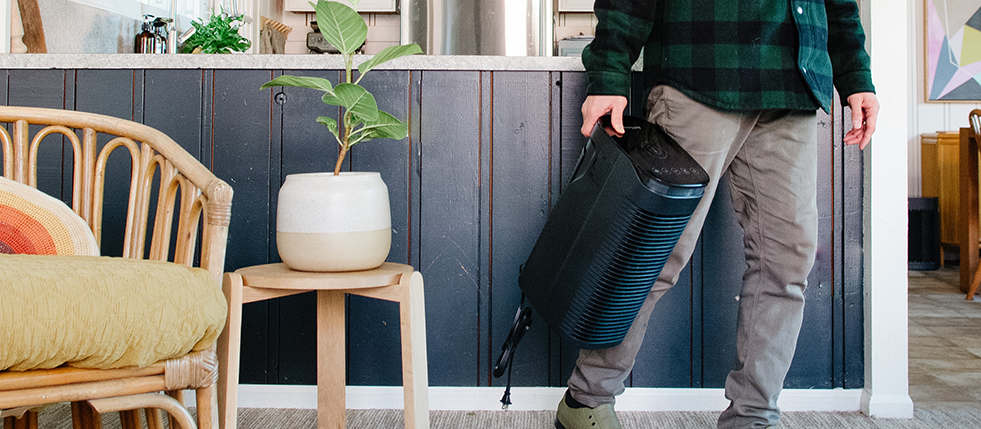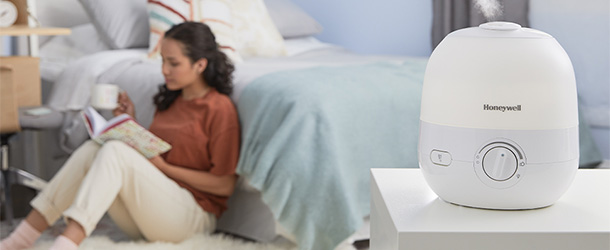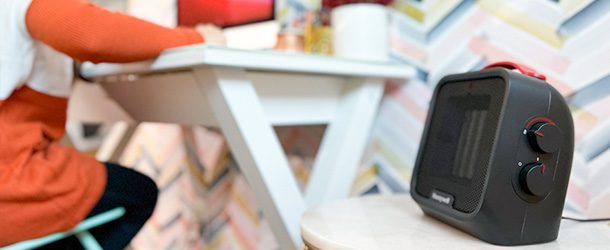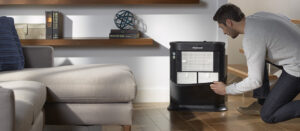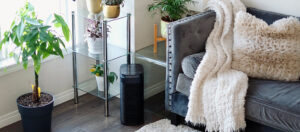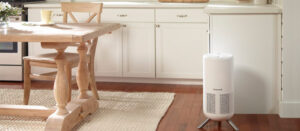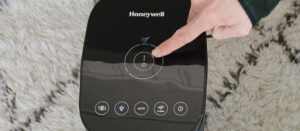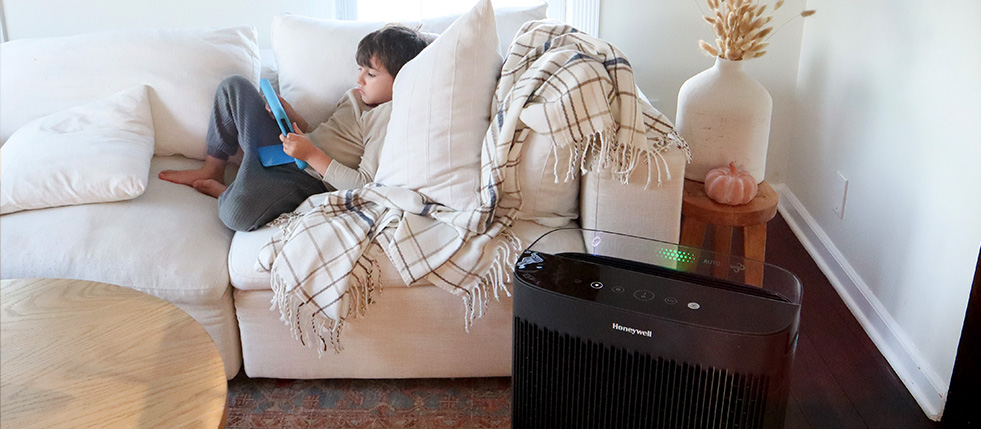If you ran a finger along the top of the fridge or your child’s bedroom bookcase, how much dust do you think you’d discover, hypothetically? (Don’t actually do this. Read on to find out why.) If you have no idea how much dust might be up there, it’s probably a lot.
This isn’t to dust-shame anyone. It’s easy to overlook something that perpetually accumulates in out-of-sight areas, as well as gradually right under your nose. Keep in mind that dust isn’t just unappealing to the eye or gross to think about. Breathing the dust inside your home can be unhealthy for household members.
What is dust made of?
Dust can be made up of dead skin cells, dust mite droppings, and dust mite body fragments — yikes! Let’s check out this statement’s components and implications more closely:
- Dead skin cells: Each of us sheds around 1.5 grams of dead skin flakes daily.
- Dust mite droppings and body fragments: Dust mites in your home, feeding on your dead skin flakes, can produce these triggers for allergy sufferers.
Because we spend up to 90% of our time indoors, you can see how a dust mite-friendly and allergy or asthma-unfriendly environment is sustained. And we’re only talking about dust here. Pollen, pet dander, smoke, odors, and VOCs (volatile organic compounds, gasses, or chemicals that a variety of household products emit) also pollute the air inside a house.
How can breathing household dust harm my family’s health?
It might sound scary, but don’t panic. Just keep an eye out for these dust mite debris allergy symptoms in members of your household:
- Sneezing
- Runny nose
- Itchy, red, or watery eyes
- Nasal congestion
- Itchy nose, roof of mouth, or throat
- Postnasal drip
- Cough
- Facial pressure and pain
- Swollen, blue-colored skin under your eyes
- In a child, frequent upward rubbing of the nose
What can I do to fight dust and keep my family healthy?
Let’s start with what not to do: Don’t dust your house the old-fashioned way. Leave feather dusters in the past where they belong. Cleaning methods that stir up dust should sound like a bad idea to you by now.
Three steps for cleaning your indoor air.
Step 1: Place effective air purifiers in high-traffic rooms and spaces where allergy sufferers spend time. Air purifiers help capture and reduce dust in your home’s air. An air purifier acts as a dust filter for a room.
What makes an air purifier effective? Choose a device with certified HEPA filtration or highly effective electronic filtration. Honeywell Air Purifiers employ filtration technologies to reduce dust in any room in your house.
Also, consider the CADR (Clean Air Delivery Rate) when comparing devices. The CADR tells you how effectively the air purifier will clean and circulate air in a room of the size it’s recommended for.
You’ll breathe easy knowing that third-party testing and verification shows that Honeywell air purifiers help clean and circulate the air in a room 4.8 times per hour. That’s a remarkable 115 times per day.
Step 2: After turning on the air purifiers in your selected rooms, use a clean, damp microfiber cloth to wipe down surfaces gently. As much as possible, don’t stir up dust; you’ll send it airborne. Dust isn’t always easy to see, so be thorough with your cleaning.
Make sure the cloth is damp — with water — and not wet. A wet cloth can turn dust into a sludge-y mess. Wear a mask and gloves if it’s a seriously messy situation or you’re sensitive to dust. You’ll knock dust and other debris to the floor as you go. Perfect.
Step 3: Vacuum each room’s floor. Using a vacuum cleaner with HEPA filtration would be ideal. All that dust and debris you knocked onto the floor from shelves, your stationary ceiling fan blades, the tops of the fridge and cabinets, and elsewhere, is conveniently waiting to be vacuumed up. Then mop uncarpeted floors.
Make a clean break with dust.
A house doesn’t need to be visibly dusty to trouble family members and visitors suffering from allergies. Dust likely lurks in crevices and corners of even picture-perfect homes. Don’t let dust get the better of you.
Put air purifiers in the rooms that need them. Choose effective devices with air filters for dust. For additional comfort and confidence, shop for Honeywell air purifiers that employ pre-filters to reduce VOCs. Most Honeywell air purifiers are backed with a 5-year warranty. Honeywell air purifiers are your trusted partner in the fight against dust and other airborne particles.





